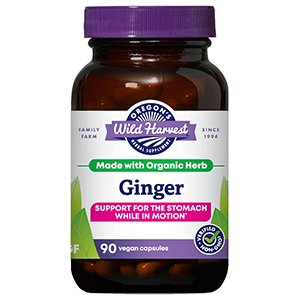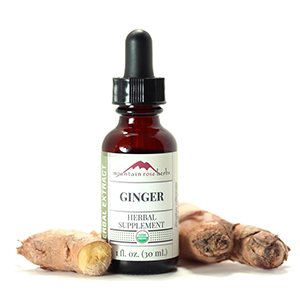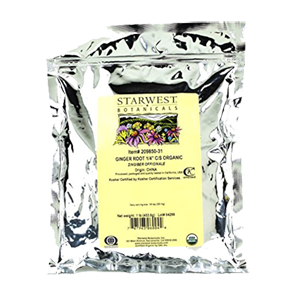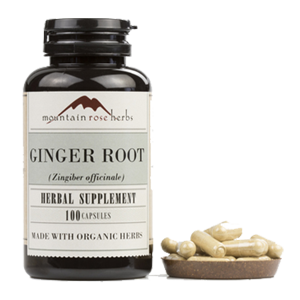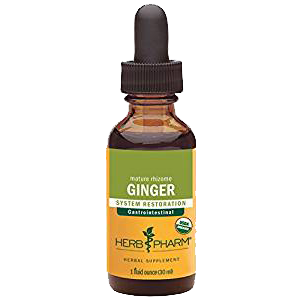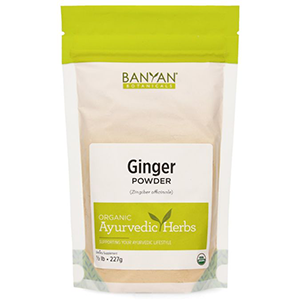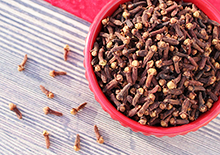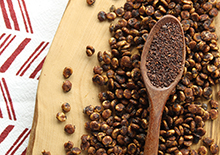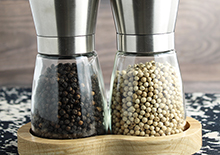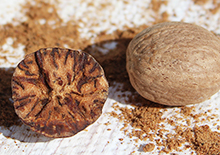- Home
- Herbs and Spices
- Secret Uses of Ginger
Intro | Cardiovascular | Analgesic | Expectorant | Aphrodisiac | Neuroprotection | Ways to Prepare | Precautions | Shop
5 Secret Uses of Ginger Root for Medicinal Purposes

Ginger root (Zingiber officinale) contains diverse bioactive compounds like
gingerols, shogaols, paradols, zingerone and monoterpenes, depending on whether fresh or dried.
Sometimes called vishwabhesaj or "universal medicine", these constituents are what give it a wide spectrum of health-enhancing benefits.
Here are 5 lesser-known secret uses of ginger to add to this list.
In addition, we'll give some traditional ways to take or prepare it for these more therapeutic purposes.
1) CARDIOVASCULAR Support
Table of Contents
Intro | Cardiovascular | Analgesic | Expectorant | Aphrodisiac | Neuroprotection | Ways to Prepare | Precautions | Shop
One of ginger's more mysterious attributes is as a cardiotonic, helping to increase blood circulation and studied for its potential at lowering LDL cholesterol.
Balanced cholesterol levels are needed for overall health and the biosynthesis of bile acid, steroid hormones and vitamin D. But when cholesterol builds up in the bloodstream it can cause blockages especially when bound to LDL or low-density lipoprotein (called the "bad cholesterol"). This can increase one's risk of cardiovascular issues if not addressed.
Of course, a health-based protocol usually includes altering one’s dietary choices but ginger root can also be a powerful supplementary ally for protecting against cholesterol imbalance.
In some research, ginger root compounds such as PARADOLS have been shown to significantly inhibit platelet aggregation or decrease the formation of blood clots.
In addition, lipid levels were substantially reduced in one study using 1 gram of ginger powder taken 3 times a day.

2) ANALGESIC with ANTIARTHRITIC Potentials
Much like ginger's common use for nausea induced by menstrual cramping or motion sickness, it can also offer a pain-reducing influence for joint discomfort.
This is in part due to its pungent quality and heating effect, but also because of bioactive components like the yellow pigmented GINGEROLS and SHOGAOLS that make it a natural ANTI-INFLAMMATORY rhizome.
It's a good one to think about adding to your personal herbal apothecary as a useful folk alternative for pain relief with little to no side effects.
Preparing a cup of ginger tea using fresh or dry root tea infusions is often the traditional way to go in such circumstances. Many studies, however, use the straight ground powder according to our inquiries.
It is considered especially therapeutic as an analgesic for soothing inflammatory arthritis, like osteoarthritis and rheumatism. (*) It was identified in research that consuming 1/2-1 gram of ginger capsules a day for 3 or more months may be helpful.
The Arthritis Foundation website recommends taking approximately 250 milligrams (1/4 gram) of ginger powder 3-4 times per day for arthritis, starting out with smaller doses and then increasing it gradually.
Likewise, because ginger also supports the health of the joints it is found in several traditional Ayurvedic joint formulations such as Yogaraj Guggulu and Kaishore Guggulu.
Another root also known for its pain-lessening features and in the same family as ginger is turmeric. Combined together you have a winning duo identified to increase potency as natural anti-inflammatory agents.
3) Expelling STUCK MUCUS
One of the great things we and many herbalists love about ginger is its use in formulations for the respiratory system.
Acting as a "delivery herb", the root's warmth helps to move and focus the actions of other herbs it's used with.
One such formula of our own personal liking is for clearing out excess mucus that tends to get stuck in the upper respiratory tract at the end phases of a cold or flu. This is essentially sticky thick adhering mucus that blocks breathing pathways.
This stuff, however, is no match for EXPECTORANTS like ginger, especially when hot water-prepared with the two roots marshmallow and elecampane. The three together can soften and expel it up and out.
Simple concentrated ginger teas or tinctures used with licorice root can likewise be very useful for soothing a cough while simultaneously offering support to both immune and lung functions.
Dried ginger is one of the best antidotes for balancing excess Kapha. It is considered to have better expectorant and stimulant qualities than fresh, but fresh or tinctured root and its gingerols and essential oil constituents can also be useful for relaxing the airways and reducing inflammation. (*)
4) APHRODISIAC
According to the book "Rasayana - Ayurvedic Herbs for Rejuvenation and Longevity", ginger root has a "reputation for being a potent aphrodisiac" throughout the whole of Asia.
In some customs, ginger juice is used for this purpose and taken with honey and half a boiled egg at night for 30 days.
Its strengthening support to the sex glands is believed to be due to its active pungent compounds like GINGEROL and SHOGAOL that can act as herbal ENERGIZERS, increasing blood flow and circulation.
This parallels with the idea that herbs and spices, like garlic and onions, in East Indian culture are often viewed as stimulants for encouraging sexual arousal and ginger is another potent one.
In some research on nutritional aphrodisiacs, ginger's actions were reported to work directly on concentrations of circulating testosterone.
In other scientific findings, ginger powder capsules at a dose of 1500 mg (or 1.5 grams) were observed to increase arousal in both men and women.
5) NEUROPROTECTION and BRAIN Function
Another one of the little-known secret uses of ginger is for cognitive support. (*)
It is on the list of herbs and spices known to foster brain functions because of its ANTI-INFLAMMATORY and ANTIOXIDATIVE influence.
This secret use of ginger is regarded in some science to offer a potential nutraceutical protection against neurodegenerative diseases.
Ways to Prepare for Medicinal Purposes
Tea infusions using fresh or dried root is a very common way to utilize the health benefits that ginger has to offer.
There are also some other very traditional ways to prepare ginger root for medicinal purposes.
Ginger Juice - One way to concentrate fresh ginger is to juice it. This is the same method used to juice any fruit or vegetable, either pressing the fresh whole root through a juicer or utilizing the blending and straining technique. The end result leaves you with a very potent liquid to be used diluted in small doses. It can be stored in the fridge for a number of days.
Ginger Paste Balls - Second is to create a paste from fresh ginger juice mixed with dried ginger powder. The paste is rolled into balls about the size of a pea and then hardened and stored for later use. The paste can also be used topically as a type of poultice for things like achy joints.
Infused Ginger - A third way is to crush or grate the fresh peeled root and infuse it into honey, ghee or oil. These concentrations can be used in small doses for therapeutic remedies.
Precautions:
Ginger is contraindicated for Pitta (heat-related) conditions and cases of hyperacidity. Excessive amounts of ginger can be too drying and cause constipation, belching and heartburn. Consult your healthcare provider if pregnant, nursing, taking any medications or if you have a serious medical illness.
Shop Related Products (About Affiliates & Amazon Associate Paid Links)
Affiliate Disclaimer: This section contains affiliate product links. If you make a purchase through one of our recommended links, we will receive a small commission at no additional cost to you. Thanks for the support!

